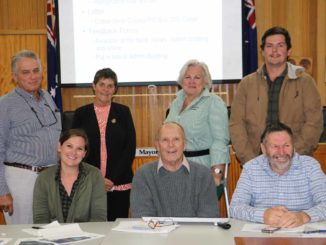Following the recent arrival of the March quarter water bills in residents’ mailboxes a number of people have taken to social media to voice their opinions on the price and quality of Cobar’s water.
Cobar Shire Council’s office coordinator Jo-Louise Brown told The Cobar Weekly the March quarter is always the highest period for water consumption in Cobar.
Mrs Brown explained council’s water accounts have the year to date consumption amount on the top line which she said can seem daunting or confusing when first read.
The amount owing for the current March quarter is listed below that figure.
“If anyone is having difficulty in understanding their bill they can bring it into council and someone will explain it too them,” Mrs Brown said.
Some people have also been confused by the different pricing levels for water.
The first 450 kilolitres (KL) of water used for the year will be charged at $2.15/KL; the once a household has consumed more than 451KL in a year it is charged at $3.20/KL; and if a household goes over 550KL in that year the rest will be charged at $4.10/KL.
She said bills are high this year due to a very hot, dry summer however if any residents believe their water reading is not correct then they should contact council.
Mrs Brown said a staff member will call and re-read their meter, check that the meter is working properly, and discuss with residents any possible leaks they might have.
Staff can also suggest ways that residents can conserve water such as turning off the taps to their evaporative air conditioners.
Mrs Brown said council has received a few complaints about water prices and water quality.
“When we get a complaint about dirty water, we flush their system,” she said.
Council’s director of engineering services, Stephen Taylor said as Cobar had experienced a very hot summer with a number of weeks over 40 degrees, many residents would probably find that their power bills will also be higher than normal. He said most people use considerably more water during the March quarter than they do during the cooler months for watering their lawns and gardens, running evaporative air conditioners and topping up pools, all of which will be reflected in their water bills.


